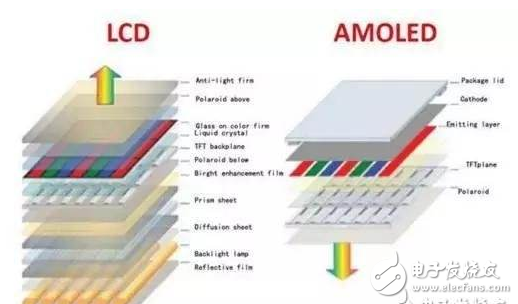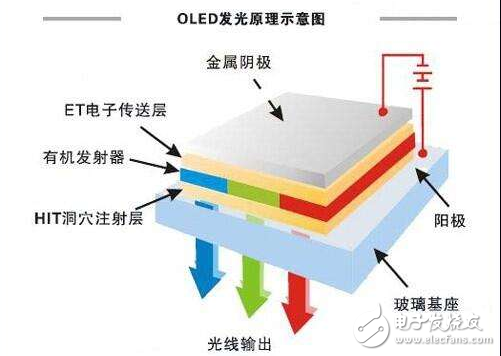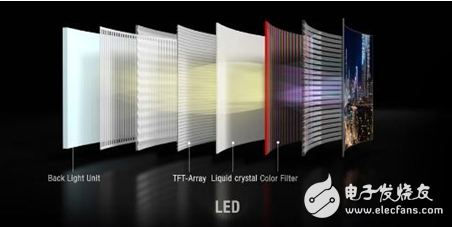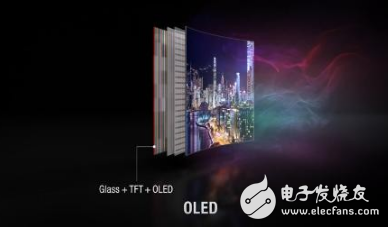LCD (short for Liquid Crystal Display) liquid crystal display. The LCD is constructed by placing a liquid crystal cell in two parallel glass substrates, a TFT (thin film transistor) on the lower substrate glass, a color filter on the upper substrate glass, and liquid crystal molecules controlled by signal and voltage changes on the TFT. The direction of rotation is such that the polarization of each pixel is controlled to be emitted or not for display purposes. Now that LCD has replaced CRT as the mainstream, the price has dropped a lot and has been fully popularized.
LED is an abbreviation for LED. It is made of a compound containing gallium (Ga), arsenic (As), phosphorus (P), nitrogen (N), or the like. When electrons and holes recombine, they can radiate visible light, and thus can be used to make light-emitting diodes. Used as an indicator light in circuits and instruments, or as a text or digital display. The gallium arsenide diode emits red light, the gallium phosphide diode emits green light, the silicon carbide diode emits yellow light, and the gallium nitride diode emits blue light. Organic light-emitting diodes OLED and inorganic light-emitting diode LEDs are further classified by chemical properties.
Organic Light-EmitTIng Diode (OLED) is also known as organic electro-laser display and organic light-emitting semiconductor. Founded in the laboratory in 1979 by Chinese-American professor Ching W. Tang. OLED display technology has the advantages of self-illumination, wide viewing angle, almost infinite contrast, low power consumption, and extremely high reaction speed. However, as a high-end display, the price will be more expensive than LCD TV.

Compared with LCD displays, LED displays have advantages in terms of brightness, power consumption, viewing angle and refresh rate. The navigation of the web page has been canceled. LED technology can be used to make displays that are thinner, brighter, and sharper than LCDs.
1. The power consumption ratio of LED and LCD is about 1:10, and LED is more energy efficient.
2. LED has a higher refresh rate and better performance in video.
3, LED provides a viewing angle of up to 160 °, can display a variety of text, digital, color images and animation information, can play TV, video, VCD, DVD and other color video signals.
4, LED display single element reaction speed is 1000 times that of LCD liquid crystal screen, can also be taken under strong light, and adapt to low temperature of minus 40 degrees.
Simply put, LCDs and LEDs are two different display technologies. LCDs are displays made up of liquid crystals, while LEDs are displays made up of light-emitting diodes.
Dear friends, now you should understand the difference between lcd and led! Then everyone will say that LED is so good, then I must buy LED display! However, the focus of this article is also here: The LED display currently on the market is not really a LED display, which is exactly the LED-backlit LCD display. The LCD panel is still a traditional LCD display. In a sense, this is somewhat of a fraudulent nature! South Korea's Samsung has been sentenced by the British Advertising Association to violate the country's advertising laws, because its "LEDTV" LCD TV has misled consumers. For liquid crystal displays, the most important key is its LCD panel and backlight type. The LCD panel on the market generally uses TFT panel, which is the same. The difference between LED and LCD is only that their backlight type is different: LED The backlight and CCFL backlight (also known as fluorescent light) are diode and cold cathode lamps, respectively.

LCD display

The entire LCD is called Liquid Crystal Display, which creates a variety of colors based on white light passing through the color filter. The white light forms a basic color such as red, green, and blue after passing, and controls the color of each pixel by controlling the over-light ratio of each pixel.
In the LCD display, it is very difficult to completely shield the white light from displaying black. There will always be some or more light leakage, which is why the real black cannot be displayed on most night display screens. s reason.
Passive and active matrix
LCD displays have been in use since the 1980s and have been used for the first time on "portable computers." These screens have a "matrix" array of pixels and are divided into active and passive matrices. The active matrix technology is more advanced and allows for finer control and faster switching speeds than passive matrices. Active matrix technology was first introduced using TFT-based matrix screens, but more variants have emerged, but they are basically the same working principle and the cost is decreasing.
L CD backlight
All LCD displays require some form of white backlighting, and backlighting technology continues to evolve over time. The purpose of the backlight is to have higher brightness, more uniform illumination, and make the display smaller, thinner, and lighter.
The LCD screen was originally used for CCFL backlighting, but has now been changed to LED backlighting. In addition, some LCD screens have not only used white backlights, but also combined with white LEDs of specific colors to achieve some more difficult purposes.

Although the backlights are all from the liquid crystal layer, most of the LED backlight sources come from the edge of the screen, usually at the border, and this design can make the screen thinner and flatter.
TV-like products are usually not as thick as the thickness requirements, so they use an overall uniform backlight, which can be more uniform and can be adjusted for local backlighting.
OLED screen

OLED stands for Organic Light EmitTIng Diodes, and each pixel itself emits light without the need for a separate backlight or color filter. Each OLED pixel can be assigned red, green, and blue colors, and now manufacturers have added yellow, but the principles are the same.
Due to the special properties of the OLED, it is not necessary to cover the light source like the LCD when displaying black, but only the pixel is extinguished and not illuminated. And that's why OLED displays bring true "black." The black color of the OLED is very deep, the contrast is extremely high, and even an amazing effect can be produced if compared with elements such as white.
OLED technology first appeared in the lab in 1987, and has now become a very popular technology in the field of smart phones. Because the OLED screen is one layer less than the LCD screen, the thickness is controlled to be thinner, which is especially important for mobile devices. For TV products, whether to choose OLED products depends on the user's preferences. However, we believe that the ultra-thin OLED is not a decisive advantage for LCD TVs.
One-to-one comparisonDue to the differences in basic properties, we can look at the direct comparison between imaging techniques of two different principles, giving users a more intuitive experience.
Black level: OLED wins
The black level refers to the extent to which the picture can be "black" when the darkest color is displayed. Since technologies such as LCD, DLP, or projection rely on filtering or shielding from white light, it is very difficult to display true black. In fact, it can be said that the LCD screen can not bring true black at all, after all, the shadowing effect is good, there will still be some light leakage. On the other hand, due to the self-illumination principle, OLEDs can bring true black as long as the illumination mechanism is turned off.
Contrast: OLED wins
Contrast refers to the difference between the brightest white and the darkest black, while LCDs have an advantage in brightness (especially in HDR mode), while OLEDs have the deepest black. In general, OLED displays typically have higher contrast because the advantage at the black level will amplify this difference.
Perspective: OLED wins
Perhaps the best IPS screens are comparable to OLED displays, but most LCD screens are not as good as IPS (especially TVs and smartphones), so in addition to the top IPS display, In contrast to the OLED, the LCD panel has a slightly worse viewing angle. In the face of OLED TV, regardless of the audience sitting at that angle, you can see the content on the screen with high quality feeling.
Color gamut: OLED wins
In terms of paper parameters, the advantages of OLED in the color gamut are not obvious, mainly because the LCD panel now introduces quantum dot technology. Basically, the best LG OLED TVs and Samsung's top quantum dot LCD TVs are comparable in color gamut performance.
However, usually only the best LCD TVs are comparable to OLED TVs, so overall color gamut performance is better.
Brightness level: LCD wins
Since LCD TVs typically use separate backlighting, they generally provide better brightness. In reality, the best LCD and OLED have a difference of about 400 NIT in brightness. In general, the LCD is superior in brightness level. Be aware that higher brightness will give the screen a better look in the outdoors or during the day.
HDR
HDR mode can increase brightness by 1000 to 10,000 NIT, while HDR-capable OLED TVs are comparable in brightness to LCD TVs. However, some Sony LCD TVs can increase the brightness to 1000 to 1300 NIT, so overall, LCD TVs are brighter.
Cummins Ferrule Seal,Cummins Rectangular Ring Seal,Cummins O Ring Seal,Cummins Rectangular Ring Seal
Chongqing LDJM Engine Parts Center , https://www.ckcummins.com